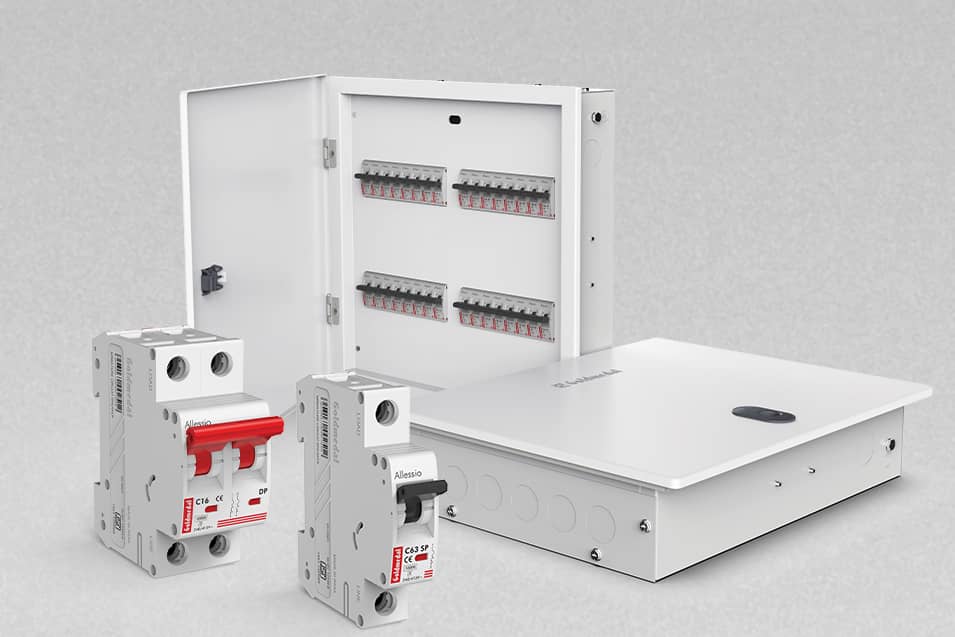What is the purpose of a distribution box?

A distributor box regulates the flow of electricity and sewage. It divides power among different circuits in the electrical system and manages effluent in septic systems to prevent flooding or backup. An adequately installed distributor box minimizes the risk of electrical issues and increases efficiency. Its functional need can be seen in homes, industries, and even toilets. With the proper care, a distribution box can be integrated to serve the user’s needs and improve the system’s durability. Find out more information at https://www.handymansingapore.net/distribution-box-installation/.
Purpose of a Distribution Box
The following is the purpose of the distribution box;
Safety and Protection
The distribution box exists for the safety and protection of an electrical system. The circuits in the box are safeguarded from overloads and short circuits by breakers or fuses. Overloads are dealt with by automatic switches, also known as breakers or active protection systems, known as fuses that gradually dissipate power during risk situations. This mechanism is essential in avoiding danger to both people and their belongings. For professional electrician services, contact https://www.handymansingapore.net/electrician-services/ to ensure your distribution box is installed and maintained safely.
Benefits of an Electrical Distribution Box
The electrical distribution box makes it easy to manage power in multiple circuits as demand is distributed to various building parts, such as HVAC, lighting, or appliance power outlets. This method of systematically dividing power ensures that every device and appliance receives the required power while preventing interruptions and overloading specific circuits.
Key Benefits of a Distribution Box
Management systems primarily used in buildings with electrical distribution boxes designed in the circuit breaker canvas help manage the flow of electricity into parts of appliances or devices, making centralized control use easier. Some of the benefits include:
- Easy Monitoring: If power in a device or appliance gets overloaded or a fault gets triggered, it is easy to identify the problem by consulting the distribution box.
- Simple Power Management: Unlike unrestricted control, centralized control enables quick supply adjustments to circuits while ensuring power is efficiently used.
- Easy Shutdown: Maintaining the system of wiring electricity in devices and appliances can be easily managed if safety measures such as switching off specific circuits are used.
System Expansion
To satisfy electrical demand in either a residential or commercial facility, a distribution box can fulfill system expansion. More circuits can be installed for new apparatuses, equipment, or other devices. Because of this adaptability, the distribution box is crucial for future developments in the electrical systems of buildings. It also permits the easy addition of new technologies already on the market, ensuring the system is ready for the changing energy requirements.
Compliance with Standards
The use of distribution boxes for all electrical systems in a building is an electrical safety standard. Documents and permit plans ensure the installation meets local safety codes and requirements. A distribution box is, in many cases, an essential component for every new electrical installation. This enables the assumption that all electrical systems are safe and compliant. Distribution boxes also serve an equally important function of complying with safety laws and minimizing risks of an electrical nature.
Types of Distribution Boxes
Understanding the different types available can help you choose the right distribution box. Several designs, such as surface-mounted, flush-mounted, and modular distribution boards, are appropriate for different installations. The selection of a distribution box depends on the size of the building, how complex the electrical system is, and the available space.
Maintenance and Inspection of Distribution Boxes
For the electric system to be safe and functional, consistent maintenance and inspection of distribution boxes is critical. Regularly inspecting for wear and tear, corrosion, or loose connections eliminates the possibility of faults. Upgrading the circuit breakers and making sure the system complies with the most recent standards is essential to continue ensuring optimal system performance.
Advantages of Proper Distribution Box Installation
Installing a distribution box offers many advantages. First, it ensures power is distributed uniformly, making the system function optimally. Second, it lowers the risk of electrical malfunctioning issues and boosts the life of the entire electrical system. Third, managing the distribution box significantly improves maintenance and simplifies system upgrades and expansions as the system grows.

